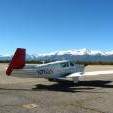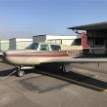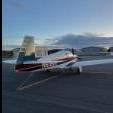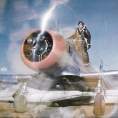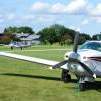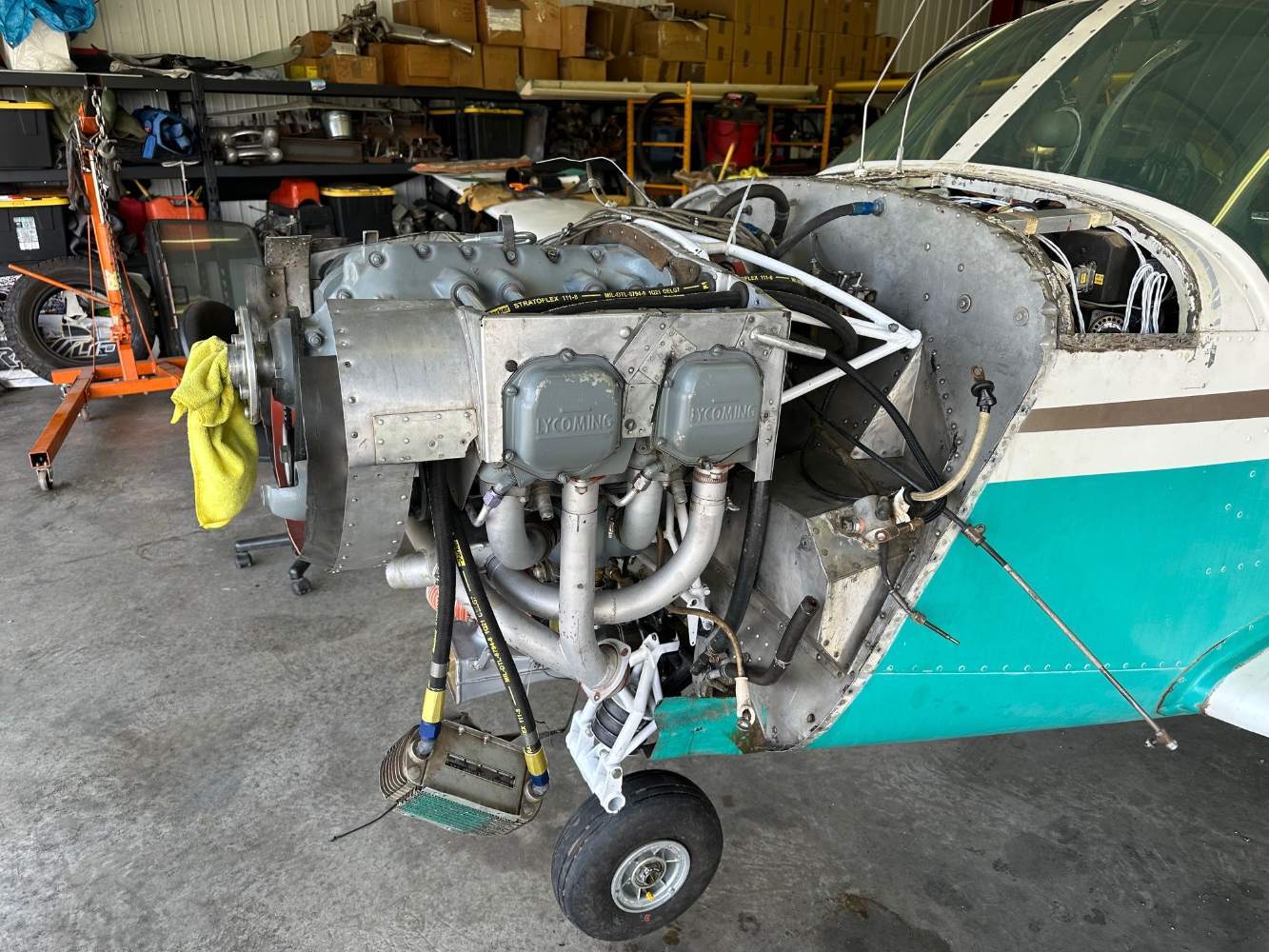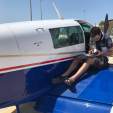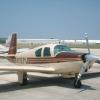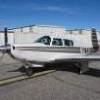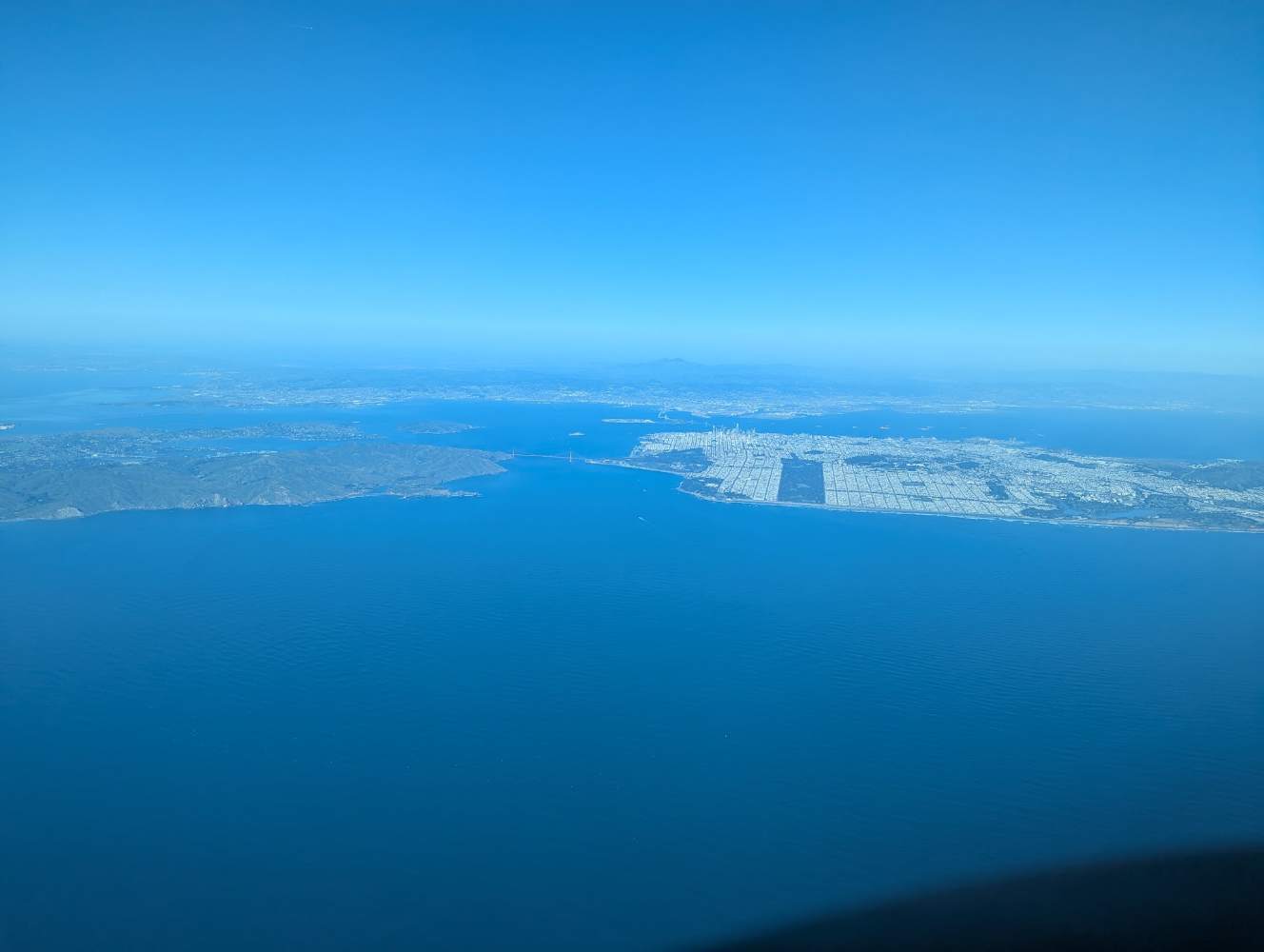Leaderboard
Popular Content
Showing content with the highest reputation on 05/02/2025 in all areas
-
Of course I do. Absolutely. But you said you were acting as safety pilot. Unless there was an arrangement that you might toss in a curve ball or create a challenge, it simply wasn't your place to do so.4 points
-
I hear people who say “I’d never fly IFR without an Autopilot” and I think what fools, what their plan when it fails? Because one day it will. It’s all proficiency based, I used to fly my Maule without an Autopilot and a Maule isn’t a good IFR platform without issue often to ILS minimums. But I flew real IFR a LOT, now I won’t fly IFR anymore because I’m not going to put the work into it that’s required to gain and maintain proficiency, plus I don’t do the cross country like I used to that demanded IFR. My belief is if you have an Autopilot you need to fly without it often enough that your comfortable hand flying. I fear many can’t they never really trained without one.4 points
-
There's a lot of good advice in this thread, but this is really the crux of the issue - you can't be good at something you rarely do. I appreciate that frequent IFR training and practice are a challenge for people like us, who don't fly professionally. But the challenge doesn't change the truth.3 points
-
My personal attitude is two-fold: In IMC, use whatever assistance you have available. My job is to watch it, anticipate the next move, and make sure everything is as close to perfect as possible. For practice approaches, make some of them with no help, just me holding the yoke and following the needles. My goal here is to be at least as good as my last practice approach, but probably not up to the level of #1 above. If in the clag and hand flying, my goal for that approach is to be close enough to land at the end. Sure, expect a miss on every approach, but really, don't we always land at the end of one, and don't we usually shoot only the one? Sometimes being off isn't all my fault, like when the new tower brought me in, "maintain 3000 until established," and my vector brought me over the IAF, charted at 2700 . . . Fought altitude & speed the whole way, ended up a little right as I broke out just under 1000 agl, and saw the runway to my left. Asked and was given right traffic, circle to land, because I didn't see the benefit of going missed and doing the whole thing again, likely with another poor vector. Isn't hand flying in the soup fun? Tops were just under 3000, ASOS said 900 broken, I thought it would be easy. P.S.-- @AndreiC, if you want goggles to feel "more real," go out with a CFII and do approaches in the evening, out in the country. You won't know where the sun is, because there isn’t one, and any peeks you get from behind them wont help you any.3 points
-
My best clients are those who come to me complaining that they are concerned they have become too autopilot dependent. When I fly with them, these are the top three things I see, in order if their prevalence and seriousness 1. Loss of anticipation. The basic, “what’s next laterally and vertically?” that slows things down and keeps us ahead. I wrote about that this past year in IFR Magazine. It’s not only #1 on my list. It is so far above the others it could arguably be the only one on my list. . 2. Poor division of attention. Autopilots get us used to not having to look at the instruments. We can take our time looking up frequencies, loading approaches, copying instructions. This includes a wide area from the way most of us tend to pressure the controls when we do something else (that’s your 20° off) to not following a “3 second rule” (when doing something else, check the instruments at least every 3 seconds) to fixation to failing to prioritize 3. Scan breakdown. Loss of basic attitude instrument flying. It’s last and way behind the other two because (a) it’s the fastest to come back and (b) it’s usually caused by 1 or 2. I can’t count the number of times I see a CDI needle moving left and a “rusty” hand flyer turn away from it rather than toward it. But I think that’s more about poor division of attention and the rushed feeling we get when we don’t anticipate adequately than not knowing how to interpret instruments,3 points
-
Andrei, what you reveal is a very common issue that I and my pilot friends deal with. FWIW, here is my experience: I had this problem right after getting my instrument rating. I struggled for years until I had instructors that were from the Fed Ex method - they utilize the TLAR (That Looks About Right) system. The idea is that trying to fly an approach with absolute precision in anything less than still air is not realistic for most pilots when hand flying. More importantly, the FedEx safety analysis revealed that absolute precision was less safe. Gradually I became more successful and confident as I I learned that it is OK to be fairly close to the vertical and heading course. Technique wise I learned to use very minor nudges on the controls and to verbally call out my next step. Like you my actual IFR flying is limited. About 80% of my flying is 3-4 hr cross countries in the mountainous west and I hand fly some type of practice IFR approach on every VFR flight (without hood) when allowed by the controllers. I don't ever hand fly hard IFR in my K model, never to minimums and only through layers. Icing is almost always in the forecast in winter storms across the western US and only my prop is deiced. A couple of times over the years my autopilot (KFC 150) stopped working mid-approach in actual IFR and the hand flying was easier than practice flights under the hood with a safety pilot or instructor in the right seat. Maybe "performance anxiety" makes things harder. Practically speaking all of my instructors and kerosene burning pilot friends say that hard IFR single-engine and solo pilot flying is a fool's errand (esp. in the mountains). I think the safety record supports that concept. Thanks for bringing this subject up. I am sure others will chime in and provide their experiences which may be helpful.3 points
-
I dumped my FLYING subscription a decade ago...ZERO regrets.3 points
-
Well, you can still read all of my articles in FLYING since they are eventually posted online.2 points
-
I'm with you there. I bought a K a while ago and had Dugosh do a pre-buy turned annual. I didn't stay there all the time, but dropped in a few times during the inspection to check on things etc. They caught some stuff, but the biggest issue at the time I caught on the test flight (AI needed overhauling - had an issue that rendered the AP unreliable). Last year I bought an Eagle from Jimmy, that was already at KGGG for an engine install. Maxwell did the annual, which in my mind served as a pre-buy. I spent a week in Longview, TX. Dropped in daily - same drill. The Maxwells were very accommodating, answered all my questions, addressed all the issues that were found (things like a blown voltage regulator, worn tires, adjusted the speed breaks etc.), and did a couple of extra things I asked for, like spraying corrosion X in the wings (I was bringing it to SC near the ocean) and other minor stuff. Paul also took me up on a flight as he was breaking in the engine, which doubled as a test flight and I was able to check avionics, AP, rigging etc. After 70 hours, a few things popped up here and there but I don't think any of it could've been prevented at the time. Just normal stuff that breaks in an airplane. My rationale for not insisting on an independent pre-buy was simple: between Jimmy and Maxwell, they have built a solid reputation over the years, which I don't think either would want to tarnish by selling you/signing off on a plane riddled with issues, or try to hide anything. If I were buying from an individual or a lesser known/less specialized broker, I'd sure want a pre-buy, as I did with the K. But with the plane already in East Texas, I'd choose convenience and Maxwell's reputation over flying it elsewhere for a pre-buy. My 2 cents. I'm sure a lot of people here disagree.2 points
-
An airport neighbor asked me to be his safety pilot for some approaches. He was flying a Rocket. On his third approach he was about to the FAF and I pulled the CB for his autopilot. He totally lost it and had to take off the hood. It took him a while to find the pulled breaker. He would have been dead in real IFR. He got mad as hell and was yelling at me. He said I had no business doing that and he was going to report me to the FAA. I wish he would have, that would be a fun conversation. He told me he would never fly with me again. Which was fine with me, I didn’t think he was safe. The funny thing is, when he sold his plane, the buyer hired me to ferry it. He had to hand me the keys to his plane.2 points
-
There are definitely those who believe that unless you are hand-flying as a proficiency exercise, the autopilot should always be engaged when not contrary to limitations. That's not a Cirrus-only thing. Gary Reeves who specializes in avionics has been preaching this for several years. I agree with you - if in the real world, the AP is not doing what you expect hand fly. The only problem is, with modern systems, if something on the approach is not exactly as you expect, the chances are the error is yours. Sometimes, the pilot expectation is incorrect. Other times, the pilot has failed to set things up properly; Still other times, the pilot has failed to monitor progress and fails to notice the flight plan sequencing isn't where it should be. The system simply not doing what the pilot told it to do happens but is pretty rare in comparison. That's the reason I require a coupled ILS on an IPC. I have seen too many pilots screw a simple approach up.2 points
-
The bulk of my IFR flying was in my M20F which didn’t have an autopilot. It did have a functioning PC system so you could let go of the yoke without it rolling over. I took my ATP checkride in an airplane without an autopilot. The hardest thing to do without an autopilot is dealing with a complex reroute where you have to write it down, figure out where those waypoints actually are and spelled and update the NAV while hand flying the plane. I personally found this a lot easier back in the day of paper charts. There was not as much button pushing, all you had to do was switch frequencies on the nav radio and spin the OBS. And you probably didn’t have to do that for a while.2 points
-
That bulletin can be safely ignored unless you’re flying a Cape Air profile with very high MAP and ROP. Mike has many thousands of hours operating his TSIO-520’s 2100 and 2200 LOP with out any unusual counterweight pin/bushing wear. Sent from my iPhone using Tapatalk2 points
-
Today was a great IFR training day around here (ceilings 400'-800', no turbulence, solid IFR, good VFR weather nearby if ceilings were to go down more) so I went to do some IFR practice by myself. The first two approaches, flown with the help of the autopilot, were great, rock solid, very happy with them. (RNAVs; the A/P is STEC 30 coupled to GNS430W). Then I thought let's try a few flown by hand. Boy, was I in for a surprise. I felt behind the airplane most of the time, occasionally finding myself on a heading 20 degrees off what I wanted, etc. The 4 approaches I tried worked out eventually, but I was definitely not proud of myself. I felt all the time like a juggler who is at their limit because even one simple thing I was doing (turning a knob on the GPS or adjusting the DG) was bound to throw my scan off. I know what I am supposed to do, go back up under the hood with an instructor and shake off some rust. But is it just this, being rusty? I did an IPC maybe a year ago, and I did very well on it, all without an autopilot. I don't fly actual IFR all that much, probably just barely the 6 required approaches in 6 months, and mostly just going through a layer on my way up or down, almost always with the A/P on. Advice? How do others handle this?1 point
-
If nobody ever complains, nothing will ever change. You will never break the camel’s back unless somebody starts piling on the straw.1 point
-
Both autopilot and hand flying requires proficiency and you should be equally adept at both modes. You cannot monitor the A/P performance if you are not proficient at hand flying and you cannot properly manage A/P modality and engagement if you are not proficient in hand flying. You need to be ready to hand fly when A/P gives undesired states or failure. The biggest failure I used to see in Line checks is sticking with the autopilot too long when undesired state occurs due to poor flight guidance management. If you have a flight director bars, you need to be able to fly through the bars when guidance is in an undesired state until you can clear the bars. That all said, I believe in the Part 135 standard which is a functioning A/P is required for dispatch into IFR conditions single pilot so if it is broke, depart VFR only. If it fails enroute, complete the mission unless you become fatigued. In that case land.1 point
-
I agree completely that this can keep you sharp and allow you to train things that aren’t necessarily easy or safe in the plane. I use a Redbird TD2 BATD about 2-3 hours a month to fly arrivals/departures/approaches all over the country and practice failures of equipment. The sim is a G1000 and I have a G500TXi and 2 GTNs so the sim is always more mentally challenging as I am not nearly as proficient on the G1000, it requires more time away from the flying which is always a challenge. I also agree that hand flying it is more difficult that hand flying the real aircraft due to the lack of feedback. Really a great way to get the extra practice.1 point
-
FLYING has p*ssed me off for the last time. I renew every year and have since the 1980s, but also have steadily watched this great mark go down quicker than the Hindenburg. They took my bulk renewal for all 5 of their titles and removed all of them except the worst one--FLYING--without any notice but certainly with what is quickly becoming maliceaforethought. The only reason I bulk-renew every year is to get the very excellent "IFR" and "Aviation Safety" and I even found usefullness in "Aviation Consumer". Now all of those have been dropped and rolled up into the occassional single-article published in the mothership rag (FLYING). Kudos to Firecrown Media Resources (or whatever they call themselves) for taking an historically great magazine and a subset of excellent resources and dumbing them down to the basic, miniscule worthlessness that it is now, and trashing the long-standing community that soaked up all that their other excellent titles provided. Sorry to any FLYING fans out there who might be offended, but FLYING is now about as useful as an oil change shop specializing in Tesla oil changes. They've taken the equivalent of glass cockpits and removed everything but the whiskey compass (which is offensive to all whisky compasses out there). Now for the real kicker: I got an email this afternoon (in my spam folder, appropriately) asking me to "lock in my lowest renewal rate before any increases". Increasing subscription rates and decreasing content, quality and literally everything else that such a publication ever offered? Sounds about right. No thanks, FLYING. I'll be tossing your renewal offer in the bin from here on out. Just like my decades-long subscription to FLYING et al, this rant is over . . .1 point
-
Don't listen to me... I'm not an expert, don't listen to me... but if it was a plane I really wanted and it was already at KGGG, I think I would be fine with DMAX doing the inspection as long as they would let me observe and as long as they could schedule and do the work in a predictable manner and as long as we agreed to the scope of the inspection in advance. However, I have 20+ years of M20 ownership and familiarity with my M20.1 point
-
Hello fellow M20A owner. I have owned several Mooneys including a 1962 C, a 1960 A, and currently own a 1979 J. I am currently helping my son get a 1960 M20A N8389E back in the air. I ferried it 800 miles home in November, so it was a good foundation to start with. You probably have this figured out by now, I can help with firewall locations of cables and other components if you still need it. I see your prop governor cable is not routed where mine is but should work ok. I would appreciate a call, since we are currently installing a new interior and have a question about the rear seat back. The pins fit is the base perfectly, but the upper attach points don't seem to line up. Please call is you get a chance. Gary 608 334 00511 point
-
I can understand skepticism on ignoring the bulletin but I am not saying to ignore it entirely, just that its safe to ignore if you avoid the very high MAP/Low RPM ROP Cape Air flight profile that led to the issue reported in the CSB. Cape Air flew their TSIO-520 at 2100 rpm and 27" MAP ROP. For a little context: In June 2007, Cape Air grounded its entire Cessna 402C fleet due to a crankshaft counterweight issue in the Continental Teledyne TSIO-520 engines. The problem, was identified as abnormal wear on the counterweight, which led to three in-flight engine failures in the Cape Air fleet of 49 Cessna 402's. This prompted TCM to first issue, only to Cape Air, Special Service Instruction 107-5 to replace the 6th counterweights, pins, bushings, plates and snap-rings - the area of accelerated wear ( https://continental.aero/service-bulletins/SSI07-5.PDF) in order to get them back into the air by. Later despite the problem being limited to Cape Air aircraft Cessna 402 TSIO-550 engines, TCM issued a much broader Critical Service Bulletin 09-11 for a whole slew of NA and TSIO engines https://continental.aero/service-bulletins/CSB09-11A.PDF to warn against operating below 2300 rpm. So when I came on to work at Savvy years ago I queried Mike about this since he has written a great deal about how safe it is to operate highly oversquare - but I remind you he runs LOP and a lot at WOT. Below I'll share his response of this: Paul, I am intimately familiar with Continental CSB09-11A. It's a service bulletin, not an AD, so it is not an operating limitation, just a suggestion. CSB09-11 arose out of accelerated crankshaft counterweight pin/bushing wear that occurred in the Cessna 402C fleet operated by a Part 212 air carrier called Cape Air. The problems occurred in turbocharged TSIO-520 engines that were operated very far oversquare and with worst-case ROP mixtures. The Cape Air operations were very unusual -- extremely high-cycle ops, very short flights, worst-case leaning procedures. To the best of my knowledge and belief, no similar accelerated counterweight pin/bushing wear has ever been observed in normally aspirated Continental engines, nor in engines operated primarily LOP. The intensity of power pulses (and thus torsional stress on the crankshaft and motion of the counterweights) is greatly reduced during LOP operation. I have literally thousands of hours flying TSIO-520 engines LOP at RPMs in the 2100-2200 range and no unusual counterweight pin/bushing wear was observed at teardown. Hope this helps. —Mike1 point
-
1 point
-
That also makes sense since you had an inflatable seal on your last airplane, so not having one on this airplane would make the sound seem different.1 point
-
You know the cirrus training regiment requires you to engage the ap at about 300’ and to keep it on until the absolute last legal moment. when I was getting checked out, after each flight they did a review, and the only comment they had was to leave the AP engaged longer on approach. I responded that the perspective g1000 was a lot different and when I felt like I was getting behind with the interface on approach, I would cancel the AP and hand fly the approach. he said this was wrong and I should never do this. I said, my “go to” when on approach is me, not the AP. he didn’t really push back on this, but I could tell he didn’t like the answer. while I do use the AP on approaches, if anything isn’t exactly how I expect I cancel and fly it by hand. I still believe this is the correct reaction.1 point
-
Agree about the need to hand fly periodically to maintain proficiency. The other is to treat the autopilot as an idiot and do the same anticipation mantras as when hand flying. Training is a separate issue. You really need both and while some DPEs will allow it's use most of the time, others will limit it. From an ACS standpoint, at least one of the nonprecision approach must be done without the AP. When I give an IPC, I do a mix. 3D approach is typically a fully-coupled ILS and missed. One 2D approach without either primary flight instruments or autopilot. One 2D approach pilot's choice unless I see an issue with one of the other two.1 point
-
Thanks for bringing this on the table ! You are never happy with performance of single pilot hand flying IFR Unless one is flying some usual instruction sector or local procedure at home-base, it always feels “sub-optimal” when going elsewhere. So one have to accept that they will be “behind the aircraft” and “not happy about precision”, no matter how good they are I am fine hand flying but those flights require lot of currency and preparation which I can rarely afford on higher minima while being very familiar in easy airspace, while on auto-pilot I can push things further: complex airspace, plates minima, brief and prepare inside aircraft… I can fly radar ILS in complex airspace usingcoupled (or HDG/VS modes) on autopilot doing 180kias with all config and speed changes on short final doing to typical system minima but on hand-flying I would ask for procedural and 90kias final fully configured at FAF/FAP, stick to easy airspace down to typical circling minima. Same I would not fly long cruise without auto-pilot, the arrival and procedure while being tired of chasing needles for 2h tends to be interesting Go-Around and preparing diversion without auto-pilot is another nightmare.1 point
-
Only fuel should drain out the sniffle -- it's purpose is to drain any fuel that accumulates in the intake manifold from over priming or from fuel percolating out of the injector system after a hot shutdown. Someone recently reported that the fuel pump drain was connected to the sniffle drain line on their airplane. The fuel pump drain is located between the diaphragms and will leak fuel or oil depending on which diaphragm fails. At any rate, oil from the sniffle line is not normal and warrants further investigation.1 point
-
I would still stick with the 1st recommendation being Brian Kendrick if you want him to find everything - he will. He lives in Kerrville and commutes to San Marcos everyday. No seller with anything to hide wants Brian to do the pre-buy. That’s why I would want him. If he would be willing to do it, there’s no one better. If not then Dugosh in Kerrville would be next on my list. But as long as I’ve owned Mooneys around this area I’ve never heard of Keith Kehoe - he might be good, but seems strange that in 32+ years I haven’t heard of him.1 point
-
1 point
-
The Mooney Summit's Bill Gilliland foundation has reached out to Mrs. Braun to offer our help. Thanks Steffan for validating the info we needed. Thanks for all the generosity of the Mooney Community that enables us to do this.1 point
-
I have told this before, but the closest I came to being killed by a "student" was a 24,000 hour 747 Captain. He needed to get to an evening meeting and decided it was easier to pay for instructor (me) to go along instead of a checkout. Dusk take off in a C-150. He slams the throttle forward with feet on the floor. We turned left, A LOT, and headed for the trees. I booted the right rudder and kept us on the runway, barely. He did the same thing on the return, but I was ready for that one.1 point
-
There are also available RVs to be rented. The company brings them to the site and sets them up.1 point
-
Those numbers sound about right and they match well with the same data I get out of CloudAhoy. But truth be told, I am more amazed that with enough time and practice I do this mostly by feel at this point. Like hitting a 3° glideslope on final...you just know it when you see it. I check my glide path on CloudAhoy and it's usually locked onto that line. That's the TLAR syndrome: that looks about right. As I approach the numbers I transition to a TFAR method: that FEELS about right. And I consistently touch down right before the 1000' runway markers And please know that I am not humble-bragging here, at least not intentionally. My point is to be amazed at how with enough time and practice the human body and mind can do so many things intuitively. You don't think about driving your car anymore, you just do it. Or golfing or surfing or playing the piano or whatever else you do for fun. And that's when it truly does become FUN because now you're playing instead of working at it. Having said all that, I think I'll go out and have some fun!1 point
-
Also make sure the seat mechanism is fully functional and lubed correctly so it does its job in sliding down as far as it should. I've seen those jammed up due to wear, dirt and no lube and wouldn't fully engage with the track. Make sure the springs are not worn or too soft to pull the pins down. Check seat alignment left to right on each seat to make sure both of the pins are squarely over their holes before the handle is released The seat can be bent slightly and one pin doesn't enter its hole at the same time as the other.1 point
-
@warrenehc The procedure for adjusting the electronic trim indicator is in the M20M service & maintenance manual. It's a somewhat laborious and iterative process best done with two people. You'll need to drop the belly panel to get to the trim potentiometer for the "down" adjustment, and pull the indicator out of the panel and open it up for the "up" adjustment. Here's a screenshot of the pages from the SMM with the instructions on how to go about it. The info specific to the trim indicator are on the second page, paragraph #2.1 point
-
Some recent flying related pictures. My Mooney with a Blackfly from https://pivotal.aero down at Byron (C83) San Francisco from the air on a beautiful day Garmin Math: 200 KTAS + 12 KT tailwind == 215 KT groundspeed.... It was a worse discrepancy on a different flight but I hadn't thought to take a picture. In my home area the Arrowleafs are blooming. It doesn't show up as well in the picture as it does in real life, but the hills are really pretty right now.1 point
-
1 point
-
1 point



